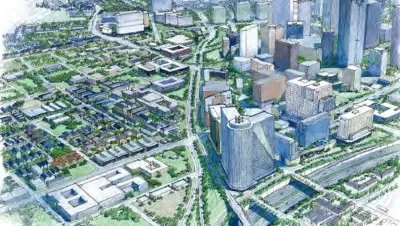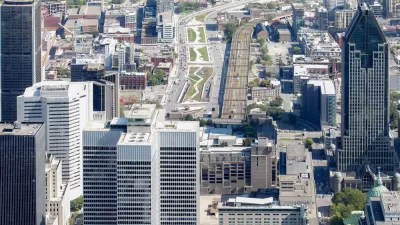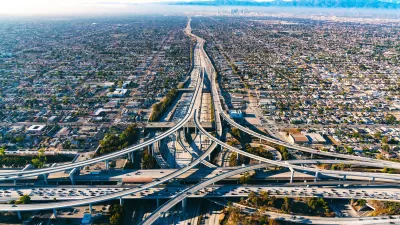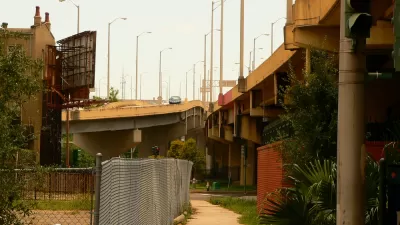With the new administration placing racial justice and equity at the forefront of transportation policy, will America finally reckon with the legacy of its freeways?

In a piece for Common Edge, William Fulton describes a scene that's all too common in many American cities: a dense, walkable downtown, brimming with diverse uses and businesses, sliced through by a massive freeway overpass. "In almost every urban location I have ever lived, a midcentury transportation scar stretches across the landscape and makes navigation difficult for pedestrians," writes Fulton. These scars reveal the inequities of top-down policies whose effects continue to reverberate throughout communities, even as city leaders attempt to redress past injustices and rectify their negative impacts.
"The complicated truth is that even as these freeways destroyed and divided neighborhoods, they also provided regional access to downtowns and other central-city locations that were struggling in the postwar suburban era. And in recent years they may have helped the rebirth of urban neighborhoods by giving city residents easy driving access to suburban job centers and also giving shoppers easy access to historic Main Streets."
The current "Big Rethink" around highways is an opportunity to challenge assumptions and find creative ways to repair the damage without sacrificing mobility. Around the country, cities are looking at ways to replace elevated freeways with boulevards, build freeway caps (which create valuable public and private real estate, albeit still near a major source of air pollution), and reduce the number of on and off-ramps to increase land available for other uses while maintaining the flow of traffic. "Healing urban scars and reclaiming the urban environment comes with a steep price tag—and doesn’t always expand freeway capacity, which is usually the primary driver of state and federal transportation funding," Fulton says, but successful examples like Dallas's Klyde Warren Park and San Francisco's Embarcadero show that alternatives are possible.
FULL STORY: Repairing the Urban Fabric Ruined by Highways

Trump Administration Could Effectively End Housing Voucher Program
Federal officials are eyeing major cuts to the Section 8 program that helps millions of low-income households pay rent.

Planetizen Federal Action Tracker
A weekly monitor of how Trump’s orders and actions are impacting planners and planning in America.

Ken Jennings Launches Transit Web Series
The Jeopardy champ wants you to ride public transit.

Washington Legislature Passes Rent Increase Cap
A bill that caps rent increases at 7 percent plus inflation is headed to the governor’s desk.

From Planning to Action: How LA County Is Rethinking Climate Resilience
Chief Sustainability Officer Rita Kampalath outlines the County’s shift from planning to implementation in its climate resilience efforts, emphasizing cross-departmental coordination, updated recovery strategies, and the need for flexible funding.

New Mexico Aging Department Commits to Helping Seniors Age ‘In Place’ and ‘Autonomously’ in New Draft Plan
As New Mexico’s population of seniors continues to grow, the state’s aging department is proposing expanded initiatives to help seniors maintain their autonomy while also supporting family caregivers.
Urban Design for Planners 1: Software Tools
This six-course series explores essential urban design concepts using open source software and equips planners with the tools they need to participate fully in the urban design process.
Planning for Universal Design
Learn the tools for implementing Universal Design in planning regulations.
Heyer Gruel & Associates PA
Ada County Highway District
Institute for Housing and Urban Development Studies (IHS)
City of Grandview
Harvard GSD Executive Education
Toledo-Lucas County Plan Commissions
Salt Lake City
NYU Wagner Graduate School of Public Service





























